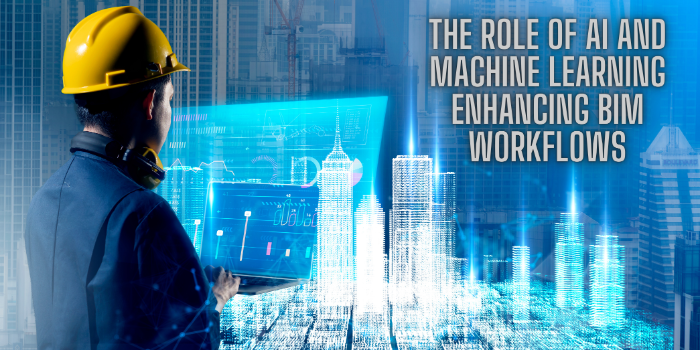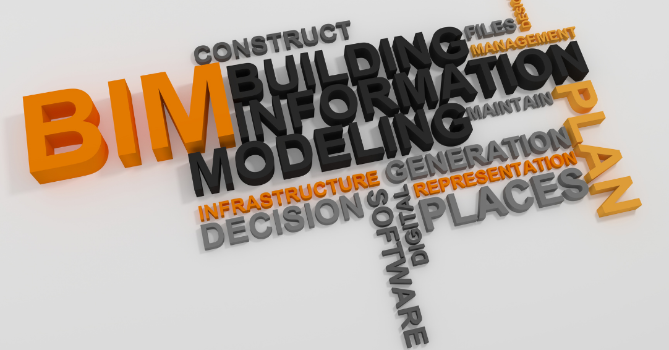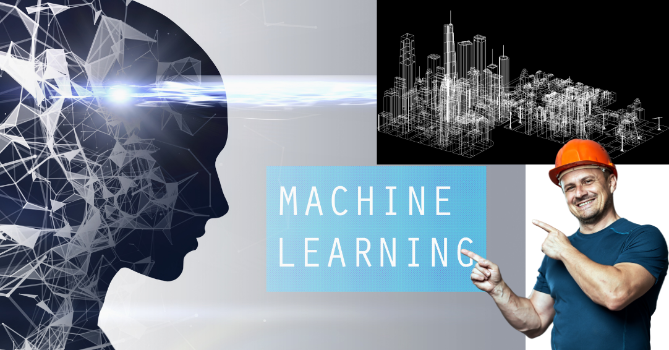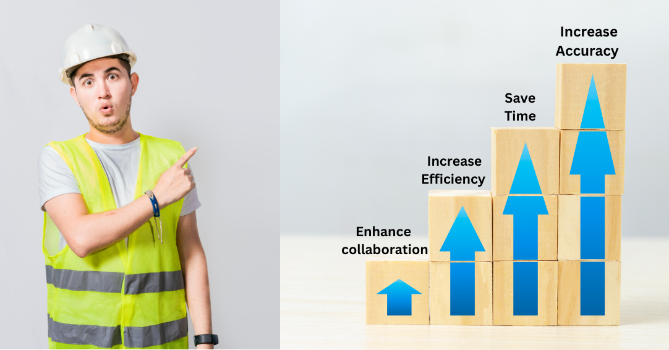
The Role of AI and Machine Learning Enhancing BIM Workflows
Introduction
Building Information Modeling (BIM) has changed how we design and build. It helps architects, engineers, and construction professionals work together better. However, like all tools, BIM has its challenges. These include manual tasks, time-consuming processes, and the risk of human error. This is where Artificial Intelligence (AI) and Machine Learning (ML) come into play.
AI and ML are revolutionizing the construction industry. They automate repetitive tasks, reduce errors, and save time. By using these technologies, companies can improve their workflows and outcomes. Imagine a project where delays and mistakes are minimized, and collaboration is seamless. This is the power of AI and ML in BIM.
In this blog, we will explore how AI and ML enhance BIM workflows. We'll look at the benefits, challenges, and future trends. Stay with us to learn how you can leverage these tools for better project success and efficiency.
Understanding BIM and Its Challenges
Building Information Modeling (BIM) is a digital process that helps manage the design and construction of buildings. It allows teams to create 3D models that include details about every part of a building. BIM makes it easier for architects, engineers, and contractors to collaborate, reduce errors, and improve efficiency. It’s a valuable tool for the construction industry, but it is not without its challenges.

One major challenge is the manual work involved. Creating detailed models takes time and effort. Mistakes can happen when data is entered by hand, leading to costly errors later. Additionally, different teams often work with separate sets of data. This creates "data silos," where information isn't shared effectively. When data is not integrated, it can cause miscommunication and delays.
Another issue is the complexity of managing large amounts of data. BIM models can become very detailed and complicated. Managing this data manually can be overwhelming and prone to errors. This slows down the decision-making process and increases the risk of mistakes.
These challenges highlight the need for better solutions. AI and Machine Learning offer powerful tools to address these problems, automating tasks and improving accuracy. In the next sections, we'll explore how these technologies can help overcome BIM's challenges and enhance workflows.
Role of AI in Enhancing BIM Workflows
Artificial Intelligence (AI) is making a big difference in Building Information Modeling (BIM). It automates many tasks that used to take a lot of time and effort. For example, AI can help with clash detection. This process finds conflicts in a building design, like when two parts of a structure occupy the same space. Traditionally, this was a manual and tedious process. Now, AI can scan models faster and more accurately, finding issues before construction begins.

AI also improves data management. BIM models have a lot of information about a building's design, materials, and systems. Managing this data can be complex and time-consuming. AI tools can automatically sort, organize, and update this data. This helps keep everyone on the same page and reduces the risk of errors. It also saves time by automating routine tasks like updating schedules or generating reports.
Another key benefit of AI in BIM is predictive analysis. AI can analyze historical data from past projects to predict outcomes for new ones. For example, it can forecast potential delays or cost overruns. This allows project managers to make better decisions and plan more effectively. By anticipating problems before they happen, teams can avoid costly mistakes and keep projects on track.
AI also enhances collaboration among different teams. With AI-powered tools, information is shared in real-time, improving communication and decision-making. It helps ensure that all team members have access to the most up-to-date information, which improves overall project efficiency.
In short, AI enhances BIM workflows by automating tasks, managing data better, predicting future outcomes, and improving team collaboration. These advancements lead to more efficient, cost-effective, and successful construction projects.
Machine Learning’s Contribution to BIM
Machine Learning (ML) plays a crucial role in enhancing BIM workflows. Unlike AI, which focuses on automating tasks, ML uses data to learn and improve over time. In the context of BIM, ML helps by analyzing vast amounts of data to find patterns and make predictions. This capability can significantly enhance decision-making and project planning.

One of the key contributions of ML in BIM is predictive analysis. ML algorithms can analyze data from past projects to predict outcomes for new ones. For example, they can forecast potential project delays or identify which parts of a project might go over budget. This allows project managers to anticipate problems and plan accordingly, reducing risks and costs.
ML also improves design optimization. By learning from previous models and construction data, ML can suggest better design alternatives. It can optimize resources, reduce material waste, and ensure that the design meets all safety standards. This leads to smarter and more efficient building designs.
Moreover, ML enhances quality control in construction. It can automatically detect errors in models or identify potential safety risks. By catching these issues early, ML helps avoid costly mistakes and improves overall project safety.
In summary, ML contributes to BIM by offering predictive insights, optimizing designs, and enhancing quality control. By leveraging ML, construction teams can make more informed decisions, reduce risks, and improve project outcomes.
Key Benefits of Integrating AI and ML in BIM
Integrating AI and Machine Learning (ML) in BIM offers many benefits that transform construction workflows. One of the biggest advantages is increased accuracy. AI tools can automate error-prone tasks like clash detection and data entry, reducing the chances of costly mistakes. This leads to better project quality and fewer delays.

AI and ML also save time. By automating repetitive tasks, they free up team members to focus on more strategic work. For example, AI can quickly generate reports and update schedules, tasks that would otherwise take hours or even days. This efficiency speeds up project timelines and helps keep everything on track.
Cost savings are another major benefit. AI and ML help optimize resource allocation, reducing waste and unnecessary expenses. Predictive analysis tools can foresee potential problems, allowing teams to address them before they become costly issues.
Lastly, AI and ML enhance collaboration by ensuring all team members have access to real-time, accurate data. This improves communication and helps everyone make informed decisions.
Overall, integrating AI and ML into BIM workflows leads to more efficient, cost-effective, and successful construction projects.
Overcoming Challenges with AI and ML Adoption in BIM
Adopting AI and ML in BIM isn’t without challenges. One major hurdle is the initial investment in technology and training. It can be costly to implement new tools and ensure all team members are skilled in using them. However, these upfront costs are often outweighed by long-term savings in time and resources.

Another challenge is data integration. AI and ML require high-quality, consistent data to function effectively. Ensuring all project data is accurate and up-to-date can be difficult. To overcome this, companies need to establish strong data management practices and invest in software that integrates well with existing systems.
Lastly, there may be resistance to change from staff. Clear communication and training can help teams understand the benefits and ease the transition to AI and ML-enhanced workflows. With the right approach, these challenges can be managed effectively, leading to more successful BIM adoption.
Future Trends and Developments
The future of BIM with AI and Machine Learning (ML) looks promising. As technology continues to evolve, we can expect even more advanced tools that further streamline construction workflows. One emerging trend is the use of AI-powered generative design. This allows software to create multiple design options based on specific criteria, such as budget or materials, offering architects and engineers more choices and flexibility.

Another key development is the integration of AI and ML with other technologies like Augmented Reality (AR) and Virtual Reality (VR). This combination can enhance visualization and collaboration, allowing teams to experience a building design in a virtual environment before construction begins. It improves communication and reduces misunderstandings, leading to more accurate project outcomes.
We can also expect greater use of predictive analytics. With more data being collected on construction projects, AI and ML will become even better at predicting potential risks, costs, and timelines. This foresight will help project managers plan more effectively and avoid costly surprises.
As AI and ML technology continue to advance, their integration with BIM will likely become even more seamless, making construction smarter, safer, and more efficient.
Conclusion
AI and Machine Learning are transforming BIM workflows, making them more efficient and accurate. By automating repetitive tasks, improving data management, and offering predictive insights, these technologies address many of the challenges traditionally faced in construction projects. They not only save time and reduce costs but also enhance overall project quality and team collaboration.
As we look to the future, the integration of AI and ML with emerging technologies like AR and VR promises even greater advancements. Embracing these tools can lead to smarter, more efficient construction practices. For anyone involved in BIM, leveraging AI and ML is not just an option but a step towards staying competitive and achieving better project outcomes.
Adopting these technologies today prepares you for the future, making your projects more successful and your processes more innovative.